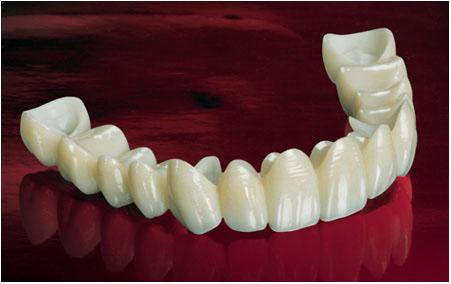PROSTHESIS
A dental prosthesis is an intraoral prosthesis used to restore intraoral defects such as missing teeth, missing parts of teeth, and missing soft or hard structures of the jaw and palate. Prosthodontics is the dental specialty that focuses on dental prostheses.
- Laminate Crowns (LAMINA)
- Zirconium
- Porcelain
- E-MAX
- Total and Partial Removable Dentures (DAMAK)
Laminate, also known as Veneers, laminated or lamina is a cosmetic solution that can be applied in many dental disorders that affect your appearance negatively. It is a form of treatment aimed at eliminating these problems by gluing the layer prepared from porcelain to the front faces of the teeth in the anterior teeth which are basically aesthetic problems in laminate leaf coatings. Zirconium, composite bonding, E-MAX materials can also be used. In most cases, they are sufficient to give the teeth a natural beauty and natural function with their solid structures and intact colors. With laminate coatings you can smile confidently!
Laminate veneer coatings can be made primarily for the purpose of eliminating color changes and to some degree of shape correction. The main application areas can be summarized as follows:
- Coloration, bleaching (tooth whitening) methods, such as advanced antibiotics, fluoride, etc. hereditary structure and color disorders
- Separate teeth (diastema closure),
- Restoration of broken or worn teeth,
- Correcting the old fillings which color and structure is deteriorated,
- It can be a cosmetic alternative in orthodontic treatment (as an alternative to orthodontic treatment) for straightening curved teeth.
Zirconia has become widely used in the field of ceramics in dentistry due to its high tensile strength, texture friendliness, and low grain diameter. It is a white alloy used instead of gray metal which is the infrastructure of classical porcelain bridges and prostheses. For aesthetic purposes, in advanced discolorations that cannot be achieved by methods such as bleaching, in the treatment of hereditary coloration, in discrete or less perplexed discoloration, oriented teeth such as distema where orthodontic treatment is not preferred, restorations of old filled, excessive loss of teeth with discolored structure, it can be used as a bridge or covering a posterior teeth as well as on pre-implant prostheses and to regulate smile aesthetics. It is a mate-rial bio-compatible with tissue. There is no purplish discoloration in the gingiva, also called the neck of the tooth seen in metal support-ed prostheses. In our clinic, every detail is taken into consideration by our specialist doctors.
Porcelain veneers are applied in the form of a metal substructure and porcelain to be used in people who have lost their teeth, people who are not satisfied with the aesthetic appearance of the teeth, who do not want to receive orthodontic treatment, congenital tooth deficiencies, and tooth coloration that cannot be removed. As long as the cleaning of the metal substructure coatings is carried out completely and accurately, it is not noticed in the mouth, but in poorly cleaned coatings, shrinkage may occur in the gingival region and a color reflect-ed from the gingiva may be noticed in this region. In our clinic, porcelain is also supported with zirconium. This eliminates this disadvantage. Zirconium is a white ceramic material but more durable. At IDH, every detail is taken into consideration by our specialist physicians during and after your treatment is completed.
E-Max crowns are the most preferred out of all ceramic crowns for their longer life and aesthetic quality. It is a material with a transparent color that is very close to the tooth combined with extra strength and durability.
They are removable prostheses which can be used in order to provide the function and aesthetics of the teeth lost as a result of anatomical changes due to aging or for reasons other than age. Implant treatment may not be available for some patients. Ex; In-adequate bone length for implant, insufficient bone thickness, patient fear of the procedure, severe diabetes may be inconvenient to perform the operation such as patients who have already under-gone radiotherapy / chemotherapy. The removable prosthesis can be applied with the support of the teeth and tissues present in partial tooth deficiencies or by the tissues in all oral teeth. Although they do not replace natural teeth, they are successful in terms of aesthetics and function. In some cases, removable prostheses can also be applied with the support of implants depending on the suitability of surrounding tissues and bone.
